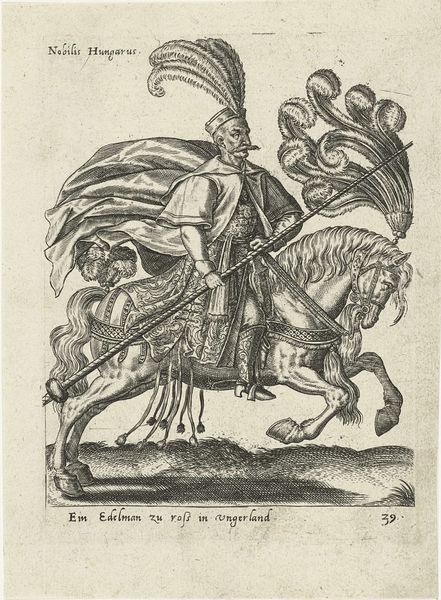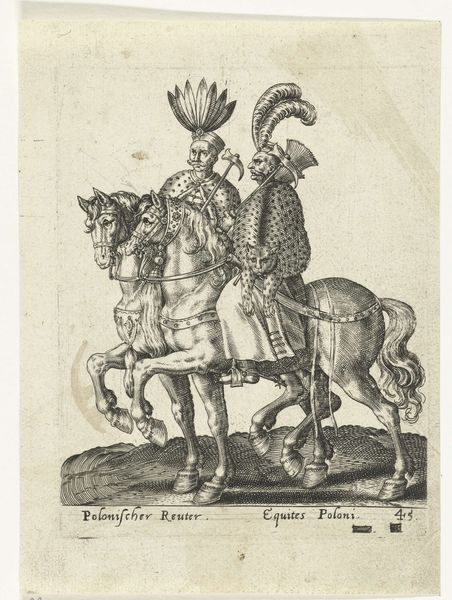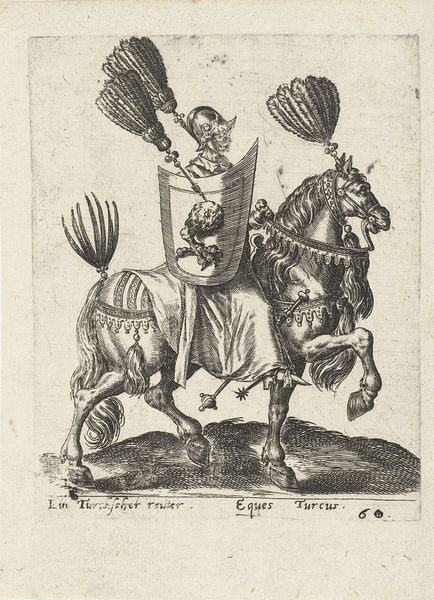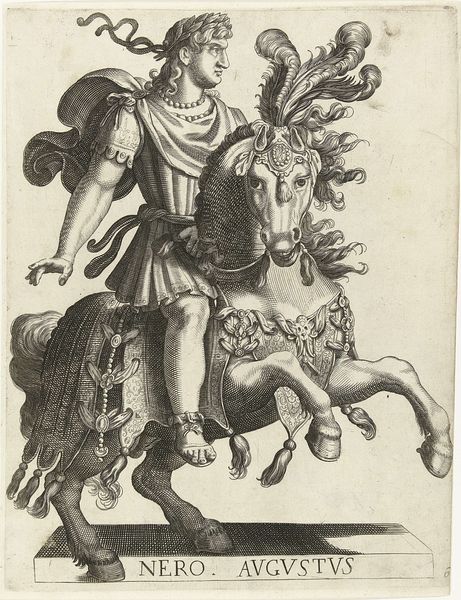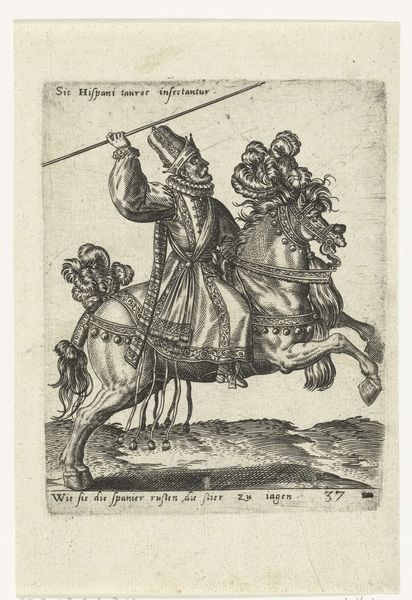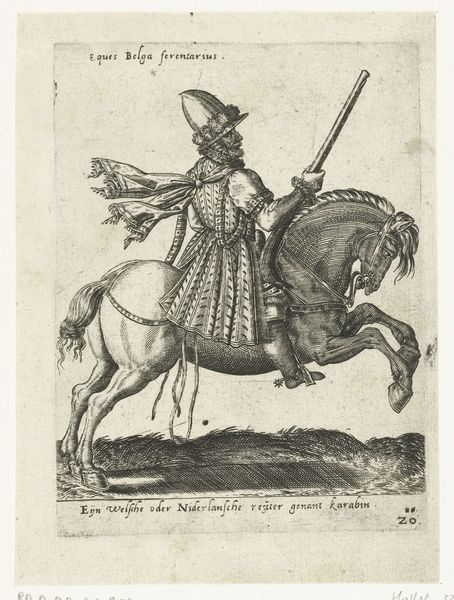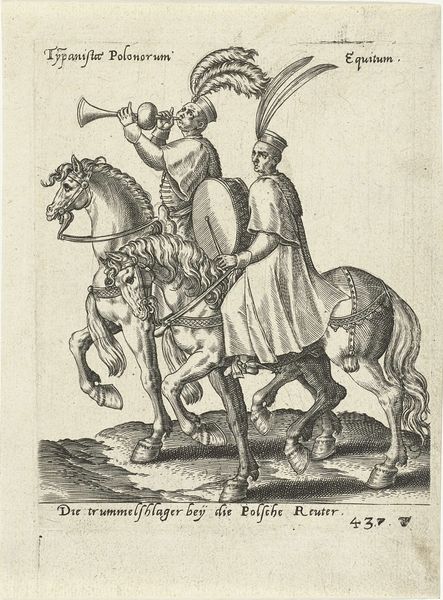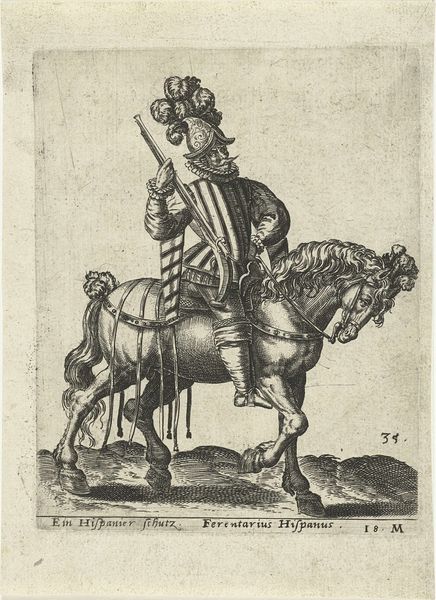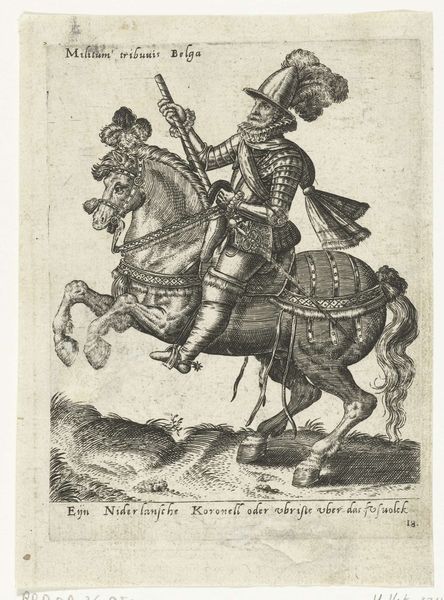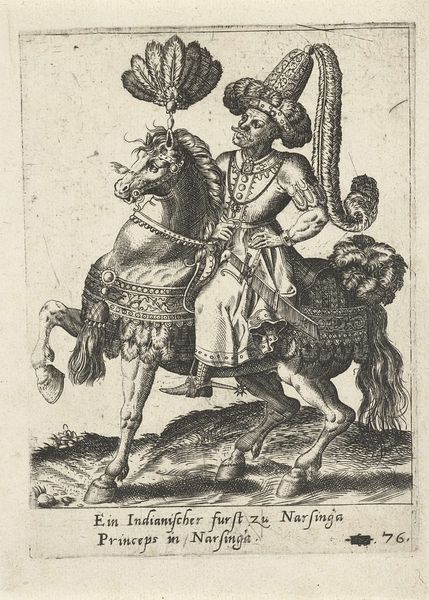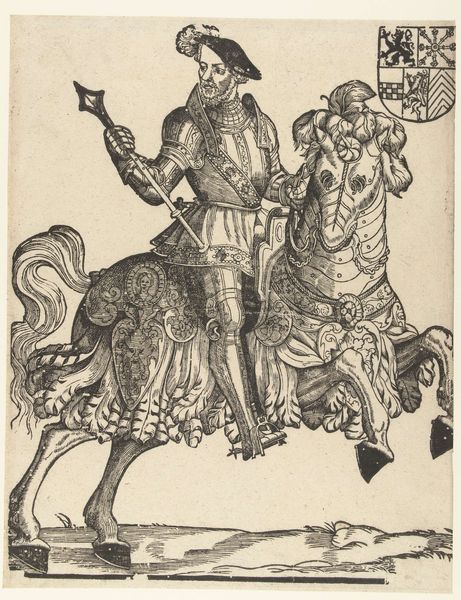
print, engraving
#
portrait
# print
#
11_renaissance
#
genre-painting
#
engraving
Dimensions: height 157 mm, width 111 mm
Copyright: Rijks Museum: Open Domain
Editor: Here we have Abraham de Bruyn's "Poolse jonker te paard," made in 1577. It’s an engraving, a print, held in the Rijksmuseum. The detail is just amazing. What catches your eye? Curator: What immediately strikes me is the incredible detail achieved through the process of engraving. Look closely. The labor! The meticulous cross-hatching creating the textures of the fabrics and the horse's musculature… consider the socio-economic context that made such specialized craft possible. How does that affect your perception? Editor: It makes me think about who had access to this image, and what it represented to them. Was it a luxury good itself? Curator: Exactly. The print wasn't merely a representation; it was a commodity. Notice the nobleman’s extravagant clothing and the horse's elaborate ornamentation. It’s not just about depicting status but displaying access to specific materials and forms of production. This image speaks volumes about material culture and social hierarchy in the Renaissance. Do you agree that it transcends "mere portraiture"? Editor: I see what you mean. The 'stuff' in the portrait is almost more important than the man himself. The material tells the story. Curator: Precisely. It encourages us to think about how power is not just asserted but also materially constructed and circulated through images like this. What did you glean? Editor: I hadn't thought about the engraving itself as a product, shaping consumption and social standing. Thanks for this alternative point of view.
Comments
No comments
Be the first to comment and join the conversation on the ultimate creative platform.
